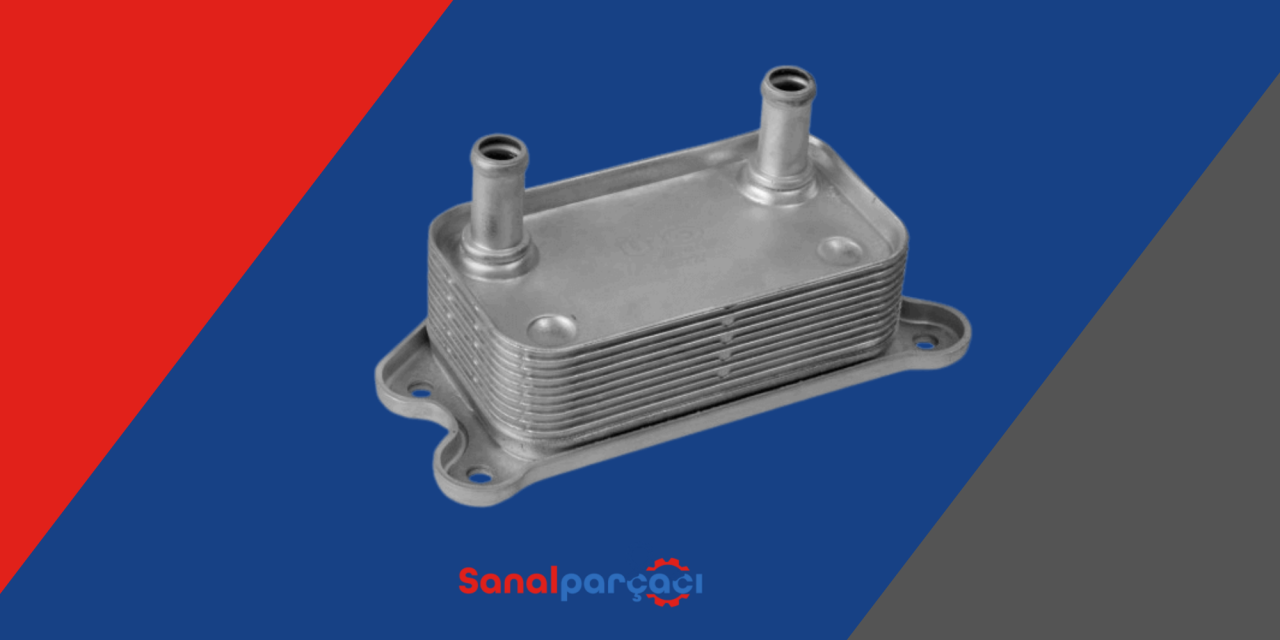BMW Oil Cooler Failures | Symptoms, Causes and Solutions

Function of Oil Cooler
In BMW vehicles, an oil cooler is used to regulate the temperature of the engine oil and ensure that the engine operates at the optimum temperature. The oil cooler cools the oil by exchanging heat between the engine oil and the coolant. This prevents the engine from overheating and helps to extend the life of the engine components.
Symptoms of Oil Cooler Failures
There may be various symptoms of oil cooler failure in BMW vehicles. Here are the common symptoms:
1. Engine Overheating: When the oil cooler fails, the engine oil cannot be cooled sufficiently. This may cause the engine to overheat.
2. Oil and Coolant Mixture: When a leak or internal failure occurs in the oil cooler, the engine oil and coolant may mix. In this case, oil stains may appear in the coolant reservoir.
3. Low Oil Pressure: A blockage or leak in the oil cooler can prevent the circulation of engine oil and cause low oil pressure.
4. White Smoke from Exhaust: If there is an internal leak in the oil cooler, engine oil may enter the combustion chamber. In this case, white smoke can be seen coming out of the exhaust.
5. Oil Leakage: When there is a leak at the connection points of the oil cooler or itself, oil stains may appear under the vehicle or in the engine area.
Causes of Oil Cooler Failures
There may be various reasons for oil cooler failures in BMW vehicles. Here are the main reasons for these failures:
1. Wear and Tear: Oil coolers can wear out over time because they are constantly exposed to high temperatures and pressures. This can reduce the efficiency of the cooler and lead to failure.
2. Clogging: Dirt and sediment in the coolant can block the oil cooler passages. These blockages can cause the cooler to not work properly and the engine to overheat.
3. Manufacturing Defects: Defects that occur during the manufacturing phase of the oil cooler can cause the cooler to fail over time. In particular, leaks or cracks can be the result of manufacturing defects.
4. Improper Installation: Improper installation of the oil cooler or improper tightening of the connection points may lead to leaks and malfunctions.
5. Cooling System Problems: Problems with cooling system components can prevent the oil cooler from operating efficiently. For example, a faulty water pump can disrupt the circulation of coolant and cause the oil cooler to fail.
Detection and Repair of Oil Cooler Faults
To diagnose and repair BMW oil cooler faults, the following steps can be followed:
1. Visual Inspection: The oil cooler and its connection points should be visually inspected and checked for leaks or cracks.
2. Coolant and Oil Analysis: Check for oil in the coolant and coolant in the engine oil. The presence of a mixture may indicate an internal leak in the oil cooler.
3. Oil Pressure and Temperature Control: Oil pressure and temperature should be monitored and checked for deviations from normal.
4. Check the radiator and water pump: Check that the cooling system components are working properly. Especially the radiator and water pump can affect the function of the oil cooler.
5. Repair and Replacement: If a fault is detected in the oil cooler, repair or replacement should be carried out. Leaks at the connection points should be repaired and the coolant should be renewed if necessary.
The oil cooler in BMW vehicles is a critical component for proper engine operation and to prevent overheating. Oil cooler failures can negatively impact engine performance and safety. Therefore, regular maintenance and inspections are important to ensure the smooth operation of the oil cooler. Vehicle owners should immediately contact a professional and have the necessary repairs performed if they notice any signs of oil cooler failure.
